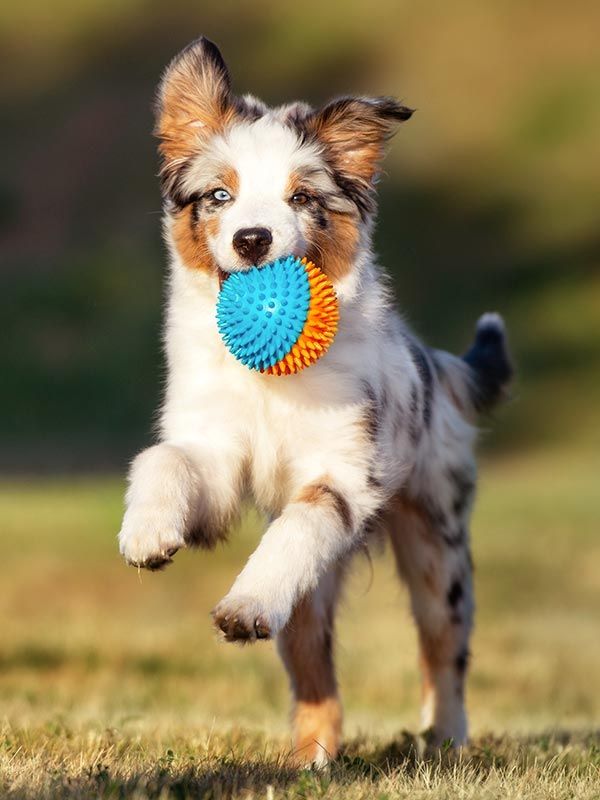Introduction
Welcoming a dog into your home is an exciting and rewarding experience. Dogs offer unconditional love, companionship, and joy. However, being a responsible dog owner requires more than just affection; it involves understanding and meeting your dog’s physical, emotional, and social needs. Luv My Pet Provides The Ultimate Guide to Dog Care .In this comprehensive guide, we’ll explore essential aspects of dog care to ensure your furry friend leads a happy and healthy life. Luv My Pet Provides The Ultimate Guide to Dog Care.

1. Choosing the Right Dog for Your Lifestyle
Selecting a dog that fits your lifestyle is crucial for a harmonious relationship. Consider factors such as:
- Energy Levels: Active individuals might prefer high-energy breeds like Border Collies, while those with a more relaxed lifestyle might opt for breeds like Bulldogs.
- Living Space: Apartment dwellers should consider smaller breeds or those comfortable in confined spaces, such as French Bulldogs or Dachshunds.
- Allergies: Hypoallergenic breeds like Poodles or Schnauzers are suitable for individuals with allergies.
Researching and understanding different breeds’ characteristics will help you make an informed decision.
2. Preparing Your Home for a New Dog
Before bringing your dog home, ensure your environment is safe and welcoming
- Secure Hazardous Items: Keep chemicals, small objects, and electrical cords out of reach.
- Designate a Comfortable Space: Provide a cozy bed in a quiet area where your dog can retreat.
- Gather Essential Supplies: Have food, water bowls, a leash, collar, toys, and grooming tools ready.
3. Nutrition and Feeding Guidelines
Proper nutrition is vital for your dog’s health
- Balanced Diet: Choose high-quality commercial dog food appropriate for your dog’s age, size, and activity level.
- Regular Feeding Schedule: Consistency helps with digestion and routine. Puppies may require multiple meals daily, while adults typically eat twice a day.
- Avoid Harmful Foods: Foods like chocolate, grapes, onions, and certain artificial sweeteners are toxic to dogs.
Consult your veterinarian for personalized dietary recommendations.
4. Exercise and Mental Stimulation
Regular physical activity and mental engagement prevent boredom and promote well-being,Luv My Pet Provides The Ultimate Guide to Dog Care.
- Daily Walks: Aim for at least one walk per day, adjusting the length and intensity based on your dog’s breed and energy level.
- Playtime: Interactive games like fetch or tug-of-war strengthen your bond and provide exercise.
- Training Sessions: Teaching new commands or tricks challenges your dog’s mind and reinforces good behavior.
5. Grooming and Hygiene
Maintaining your dog’s hygiene is essential
- Regular Brushing: Depending on the breed, brush your dog’s coat to prevent matting and reduce shedding.
- Bathing: Bathe your dog as needed, using dog-specific shampoos to maintain skin health.
- Nail Trimming: Keep nails at an appropriate length to prevent discomfort or injury.
- Dental Care: Brush your dog’s teeth regularly and provide dental chews to promote oral health.
6. Routine Veterinary Care
Regular veterinary visits are crucial for early detection and prevention of health issues
- Vaccinations: Keep your dog up-to-date on essential vaccines to protect against diseases.
- Parasite Control: Use preventatives for fleas, ticks, and heartworms as recommended by your vet.
- Health Screenings: Regular check-ups can identify potential problems before they become serious.
7. Understanding Canine Behavior
Recognizing and interpreting your dog’s behavior fosters a strong relationship
- Body Language: Learn signs of stress, fear, aggression, and happiness to respond appropriately.
- Socialization: Expose your dog to various people, environments, and other animals to build confidence and reduce anxiety.
- Positive Reinforcement: Reward desired behaviors to encourage repetition
8. Training and Obedience
Effective training ensures safety and enhances communication
- Basic Commands: Teach commands like sit, stay, come, and heel for everyday safety.
- Consistency: Use the same commands and rewards to avoid confusion.
- Patience: Training takes time; celebrate small successes and remain patient.
9. Traveling with Your Dog
Planning ensures safe and enjoyable trips
- Secure Restraint: Use a crate or seatbelt harness to protect your dog during car rides.
- Frequent Breaks: Allow your dog to stretch, hydrate, and relieve themselves during long journeys.
- Identification: Ensure your dog wears a collar with up-to-date ID tags and consider microchipping.
10. Recognizing Signs of Illness
Early detection of health issues can be life-saving
- Behavioral Changes: Lethargy, aggression, or withdrawal may indicate discomfort.
- Appetite Loss: Refusal to eat could signal underlying health problems.
- Physical Symptoms: Monitor for vomiting, diarrhea, coughing, or changes in weight
Conclusion
Luv my pet Caring for a dog is a fulfilling commitment that requires time, effort, and love. By understanding and addressing your dog’s needs from proper nutrition and exercise to training and healthcare you’ll foster a strong, loving bond and ensure your canine companion leads a happy, healthy life. Remember, a well-cared-for dog is a joyful and loyal friend.
